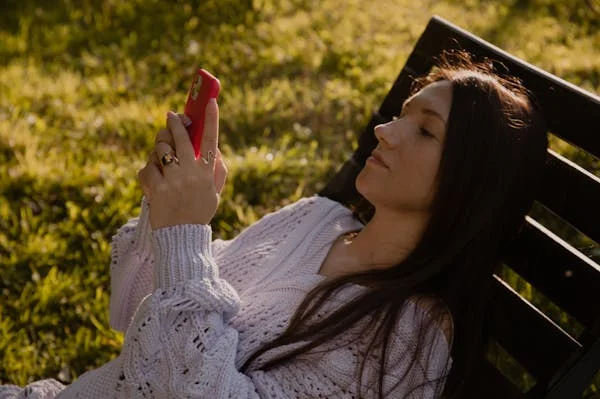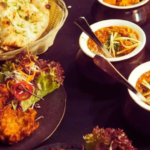Introduction
Gñory is a modern cultural movement that blends creativity, identity, and expression. It gives people the power to tell their stories using fashion, music, and digital tools. Whether it appears on city walls, in thrift store outfits, or viral videos, Gñory is a strong voice of individuality and truth.
In a world filled with trends and filters, Gñory stands out for being real. It invites people to live and create without rules. This article covers Gñory’s meaning, roots, influence, and how it continues to grow as a force for self-expression.
What is Gñory?
Gñory is not a product or a brand it is a feeling, a lifestyle, and a form of communication. It connects people across borders through shared experiences, emotions, and creative expression. Gñory encourages freedom, openness, and the value of staying true to who you are.
People express Gñory in many ways:
- Through their fashion choices
- In the music they create or listen to
- In drawings, photography, and street art
- Through online content that tells a personal story
Gñory is different for everyone, yet it brings people together under one core idea: be yourself and express it fully.
History and Evolution
Community-Driven Beginnings
Gñory began as a grassroots movement in local neighborhoods. Young artists and creators were the first to explore the ideas behind Gñory. They found inspiration in everyday life, family traditions, and their communities’ struggles and victories.
Rather than using expensive tools or following fashion magazines, they created their own styles with what they had. Old clothes, public walls, shared songs—these became the first tools of Gñory expression.
Digital Age Growth
As social media platforms grew, Gñory found a new home. Platforms like TikTok, Instagram, and YouTube helped creative voices spread their work further than ever before. Artists started documenting their personal style, daily routines, and handmade artwork. Viewers related to the realness of this content and began to adopt Gñory principles in their own way.
Creators began collaborating, commenting, and forming digital communities based on shared values: truth, style, and identity.
Key Elements of Gñory Culture
| Element | Description |
| Fashion | Custom, layered, or thrifted clothes that reflect personal identity |
| Music | Honest lyrics, mixed genres, often self-produced |
| Art | Bold, symbolic visuals using digital or physical tools |
| Community | Spaces where people express, connect, and support each other |
| Storytelling | Sharing personal experiences, emotions, and roots through creative work |
Gñory is flexible. It can be loud and colorful or quiet and minimal—it all depends on the person expressing it.
Gñory in Daily Fashion
Gñory fashion is both stylish and deeply personal. It’s not about looking perfect. It’s about telling your story through what you wear. One person’s Gñory outfit might be a jacket full of patches; another’s might be a plain shirt paired with hand-painted shoes.
Examples of Gñory Style
- Denim jackets with handwritten quotes or patches
- Bright colors mixed with neutral tones
- Repaired or recycled clothes that show effort and love
- Layered clothes of different textures and prints
- Accessories that carry meaning: friendship bands, handmade pins, or reused fabric
Gñory clothing also breaks down gender barriers. Anyone can wear anything, as long as it feels true to them.
The Sound of Gñory
Gñory’s influence on music is powerful. It allows people to share feelings that may be hard to say out loud. Artists sing, rap, or produce music that talks about growing up, fitting in, standing out, and staying hopeful.
Gñory Music Highlights
- Songs made with simple tools, like phone apps or laptops
- Lyrics about family, loss, freedom, and strength
- Fusion of styles jazz with hip hop, folk with synth, spoken word with beats
- Independent releases on platforms where creators own their voice
Musicians in the Gñory scene don’t chase fame. They seek connection. Their songs reach people not because they are polished but because they are real.
Gñory in Visual Arts and Digital Spaces
Visual art is another place where Gñory shines. From murals in alleys to digital art shared online, Gñory artists bring emotions to life.
Artists often use personal memories, cultural symbols, or deep emotions as the base of their work. They don’t aim to impress they aim to communicate.
Types of Gñory Art
- Mixed-media collages
- Mobile-drawn illustrations
- Self-portraits with layered meanings
- Symbolic photography and urban street murals
- Animated shorts telling cultural stories
The goal is to leave the viewer with a feeling, a question, or a connection.
Digital Expression and Online Communities
The internet has become a huge space for Gñory to grow. Online platforms allow people to share their styles, art, and thoughts with a global audience.
Online Gñory Culture
- Threads where users show before-and-after clothing designs
- Videos of creators making music in bedrooms or small studios
- Photo series that tell a person’s story through fashion
- Supportive comment sections where people give feedback and encouragement
These online communities build trust, pride, and a shared voice. Many people find their first sense of belonging through Gñory groups.
Challenges Facing the Gñory Movement
Misuse by Brands
Some commercial brands try to profit from Gñory aesthetics. They copy styles and language without understanding their meaning or origin. This is a form of cultural misuse and weakens the power of the movement.
Dilution of Meaning
As more people join the Gñory wave, it risks becoming just another fashion trend. That’s why it’s important to keep the focus on:
- Community roots
- Personal storytelling
- Respect for originators and cultures
Creators are constantly reminding others that Gñory is not for sale it’s for self-expression.
Future of Gñory: Where It’s Headed
Gñory is not going away it’s growing stronger. It is being used in:
- Classrooms, where students use Gñory projects to share cultural stories
- Mental health art therapy, as a healing tool
- Local campaigns, using visual storytelling for social awareness
- Small businesses, with artists selling handmade Gñory pieces
As long as people need to express their truth, Gñory will remain relevant. It may evolve in form, but its purpose honest, human expression will stay the same.
How You Can Be Part of Gñory
You don’t need money, fame, or special tools. You just need your voice and your creativity.
Simple Ways to Start
- Write a personal story or poem
- Design or customize one item of clothing
- Take a photo that captures how you feel today
- Start a mini-project (zine, sketchbook, music track)
- Share your creations with friends or online
Every small act of creativity adds to the movement.
Conclusion
Gñory is more than a word. It’s a way of life that values truth, creativity, identity, and community. It shows up in the clothes people wear, the songs they sing, the art they post, and the stories they tell.
It reminds us that everyone has something worth sharing and that self-expression is not a luxury, but a right.
As Gñory continues to grow, let’s support it by:
- Staying real
- Respecting its roots
- Uplifting voices that often go unheard
The world doesn’t need more trends it needs more truth. And that’s exactly what Gñory gives.
FAQs
What is Gñory?
Gñory is a cultural movement focused on real self-expression through fashion, music, and art.
Where did Gñory start?
It began in creative communities and spread through social media, driven by youth expression.
How can I join Gñory?
Express yourself through personal style, art, or music and share your story with others.
What defines Gñory fashion?
Layered, upcycled, and custom looks that reflect individuality and creativity.
Why does Gñory matter?
It empowers youth, supports identity, and builds a community of honest expression






